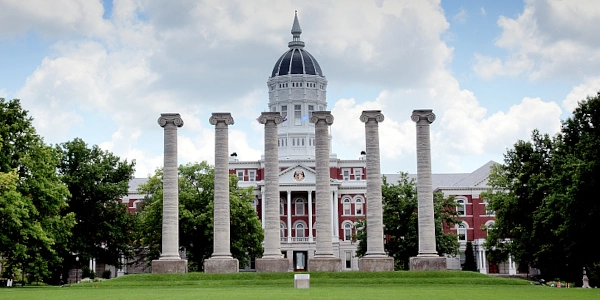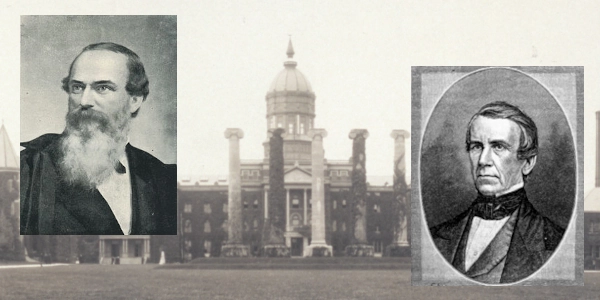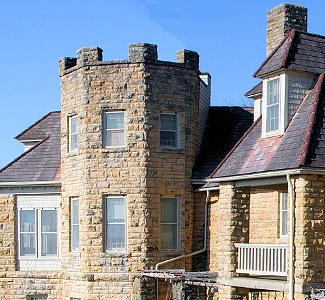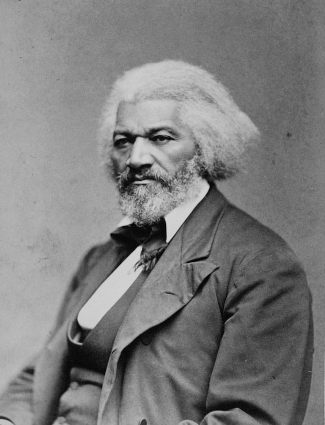Sponsor this page. Your banner or text ad can fill the space above.
Click here to Sponsor the page and how to reserve your ad.
-
Timeline
1839 - Detail
February 11, 1839 - The first public university west of the Mississippi River is established, the University of Missouri.

While the colleges and universities of the colonies in the northeast had been granting degrees since the founding of Harvard more than two hundred years before, the far west, west of the Mississippi River, had been largely involved in nothing more than the occasional settlement until the escapades of Lewis and Clark. But now, thirty years after that expedition, the state of Missouri and other western states were beginning to settle, and thus, along with that, society's finer things, education, entertainment, and the rest, were moving west as well.
On February 11, 1839, that would officially come to the state of Missouri, as the University of Missouri was founded as the first public university west of the Mississippi. That's where you could get into quibbles if you must as to the firsts. St. Louis Academy, later St. Louis College and University, had been founded on November 16, 1818, but it was private, and perhaps more rightly called a college, and was held inside a private residence during that initial year. St. Louis Academy was a boarding school for boys and had three teachers at first. It was, however, deemed a college in 1820, and then a university by December 28, 1832 with a charter from the State of Missouri. So now we're back to first public university west of the Mississippi River for the University of Missouri. Using that distinction, it followed in the footsteps of the University of North Carolina at Chapel Hill, which had become the first public university east of the Mississippi River in the United States when it opened its first building, Old East, in 1795.
So, how did the first public university west of the Mississippi River come into existence? The first idea, at least in writing, occurred in 1818 when an enabling legislation by Congress called for "a seminary of learning." That was followed up in 1820 when the first constitution of the state called for the legislature to "to support a university for the promotion of literature and the arts and sciences, as soon as may be, to provide effectual means ..."
It was not until February 8, 1839, that the timing and means began to take place. The Missouri State Legislature, the General Assembly, passed the Geyer Act three days later on February 11, 1839, which used the Virginia education system advocated by Thomas Jefferson in 1779 as its basis and commissioned a commission to select the site. The Geyer Act had been enacted to establish a complete public education system throughout the state, including elementary, secondary, and other schools, plus the establishment of a university. Henry Geyer and James S. Rollins, known as the Father of the University of Missouri due to his efforts, had authored and introduced the legislation.
It turned into a competition as Rollins had included a stipulation in his bill that awarded the site to the county that raised the most money. Each of the counties of the state (Cole, Cooper, Howard, Boone, Callaway, and Saline) wanted the university to be sited in their county. The commission stated that the site had to be at least forty acres and within two miles of the county seat. Bids were enacted. They were opened on June 24, 1839 with all counties except Saline sending a bid. It was a unanimous decision by the five commissioners to select Columbia, Boone County on a site just south of downtown owned by James S. Rollins. The residents of Boone County had pledged a $117,900 bonus.

Building the University
A board of curators began to organize the University of Missouri in October 1839, appropriating $75,000 for the construction of the first building on October 28, 1839. Construction began on July 4, 1840 with dedication of the completed structure on July 4, 1843. The school opened prior to that, on April 14, 1841, in a building bought from another college. (Sources state this was bought from Columbia College, but that may not be accurate, as that college was not founded until 1851. Stephens College, a private female college, had been founded in 1833 in Columbia, and could have been the site of a possible purchase.) In 1841, there were three professors and seventy-four students at the University of Missouri. First commencement came in 1843 with two graduates.
Today, the Missouri University - Columbia campus, now on a one thousand two hundred and sixty-two acre site, is just one of four colleges (University of Missouri, Missouri University of Science and Technology, University of Missouri-Kansas City, and the University of Missouri-St. Louis) in the University of Missouri System. The Columbus university educates thirty-one thousand students per year in over three hundred course disciplines. One of which, the Journalism School, was the first of its kind when started in 1908. It, the University of Missouri, employs over three thousand professors. The entire system educates approximately seventy thousand students per year with nearly six thousand professors.

The Complicated Founders
Rollins was the owner and editor of the Columbus Patriot, a Whig newspaper, and member of the Missouri General Assembly. He would later serve in the U.S. House of Representatives (1861-1865) and would change his vote to support the amendment to abolish slavery at the request of Abraham Lincoln. Rollins had been a slaveholder, not an abolitionist, but did not agree with secession or the extension of slavery. Geyer was a lawyer and newspaper editor, the St. Louis Times, as well as a prior member of the Missouri General Assembly who had served in the War of 1812. He would later serve in the U.S. Senate (1851-1857) and be one of the pro-slavery lawyers in the Dred Scott Case. Geyer also voted for the Kansas-Nebraska Act.
Image above: Campus of the University of Missouri at Columbus, 2009, Carol M. Highsmith. Courtesy Library of Congress. Below: Montage (background) University of Missouri campus, 1910, Bell and Palfrey. Courtesy Library of Congress; (left) James S. Rollins, uncertain author, possibly George Caleb Bingham. Courtesy North Tood Gentry, The Bench and Bar of Boone County Missouri via Wikipedia Commons; (right) Henry Geyer, unknown date and author. Courtesy Wikipedia Commons. Info Source: "A History of Education in Missouri," 1911, Claude A. Phillips; St. Louis University; "The University of Missouri, A Centennial History," 1939, Jonas Viles; Wikipedia Commons; wikia.org; Library of Congress.




